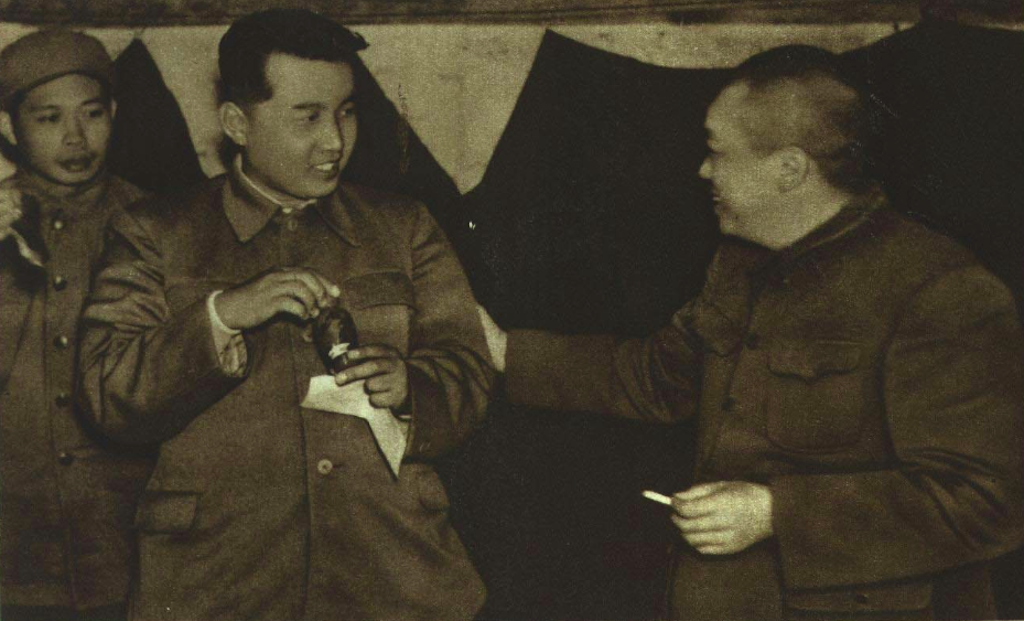

In isolated North Korea, schoolchildren are taught that the founder of North Korea, Kim Il-Sung, was born in a log cabin atop sacred Mount Paektu, the highest mountain on the Korean Peninsula. They are taught that in history his father was leading a heroic resistance movement against the Japanese occupation.
Like many stories coming from North Korea, it’s mostly bunk. There were bands of Korean guerrilla fighters roaming the countryside throughout Korea. Kim Il-Sung was among them, but he was 30 years old in 1942 and was not a well-known partisan for the longest time.
He and his band of partisans did launch a wave of attacks against Japanese troops and police across the Yalu River, North Korea’s modern-day border with China. It was enough to get Kim on the wanted list and for Japan to launch a manhunt for him. The Japanese decimated Kim’s resistance cell. By 1940, they had to escape to the Soviet Union.

In the USSR, Kim Il-Sung learned Soviet military tactics at Khabarovsk Infantry School under the command of Soviet officers. It was there he met his first wife, who gave birth to the elder Kim’s successor, Kim Jong-Il.
The Soviets formed the Korean partisans into a Red Army rifle brigade, along with some Chinese communist partisans. One of those Chinese fighters recommended Kim Il-Sung to be appointed the unit’s commander. The unit, however, never saw action against the Japanese. When Tokyo surrendered, Kim was sent to Pyongyang.
There, he was appointed assistant commander of the city’s occupation forces. Immediately, the USSR began building a cult of personality around Kim, calling him a national hero and “the most famous partisan leader.” In return, the now-popular Kim praised the Soviet Union. It was the first step toward becoming the “Great Leader” of communist North Korea.
Kim formed the government of North Korea in line with the Soviet military command in Moscow, creating a Stalinist government that ruled the north from Pyongyang. Unlike the de-Stalinization efforts the Soviet Union made after the death of Joseph Stalin in 1953, however, Kim kept his grip on ruling North Korea as tight as ever.

Even after the disastrous Korean War, Kim Il-Sung’s power in North Korea was so complete that he could not be replaced. He would go on to rule the country for 46 years, becoming the third-longest serving non-royal head of state in history. The exacting Stalinist discipline imposed on Korean society was at the center of it.
He kept the government of North Korea stunningly similar to the government in Moscow that ruled the entire Soviet Union. North Korea was, after all, dependent on its Soviet benefactors for state security and commerce. Like Stalin, Kim was the head of the Workers Party, ordered that all arable land be reorganized, and nationalized the entire country’s heavy industry at his command.
When communist China and the Soviet Union split in their views of what communism should be, China kept the Stalinist model while the USSR instituted reforms. Kim Il-Sung and North Korea stuck with what it knew, and kept China as its new best friend. There soon became one glaring difference between North Korean communism and the others: Kim’s personality cult.
In the 1960s, the cult of Kim became so overblown that he was elevated to the levels Marx, Lenin, Mao, and Stalin in the pantheon of international communist history. He changed the official history of North Korea to ignore the support of the USSR and China during World War II, which led to a failed attempt to depose Kim.
Eventually Kim managed to do one thing that no other communist leader would or even could do: implement a dynasty of rulers, appointing his son to take over rule of North Korea after his death. In 1994, he died of a heart attack and Kim Jong-Il took over, just as Kim Il-Sung had planned.
